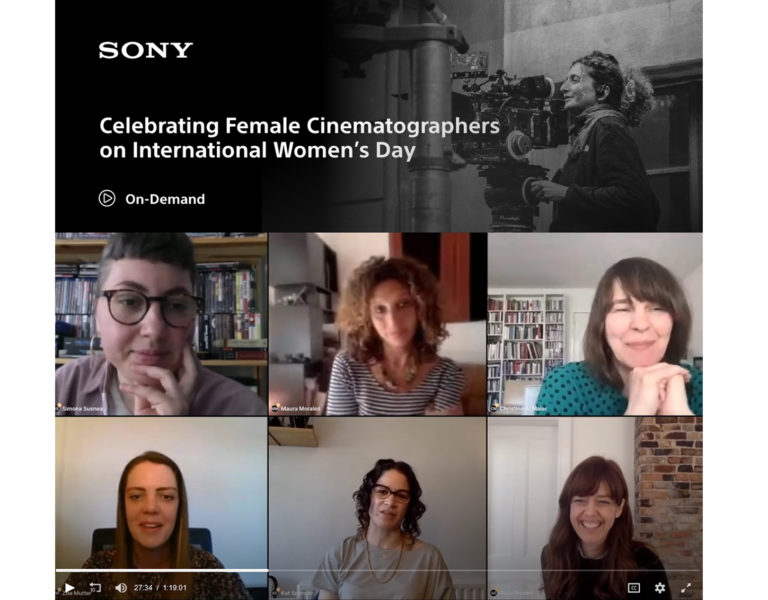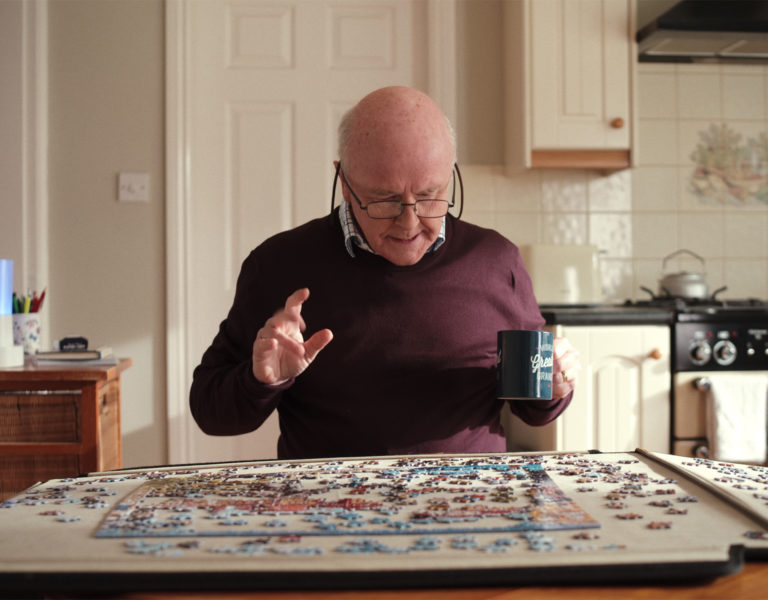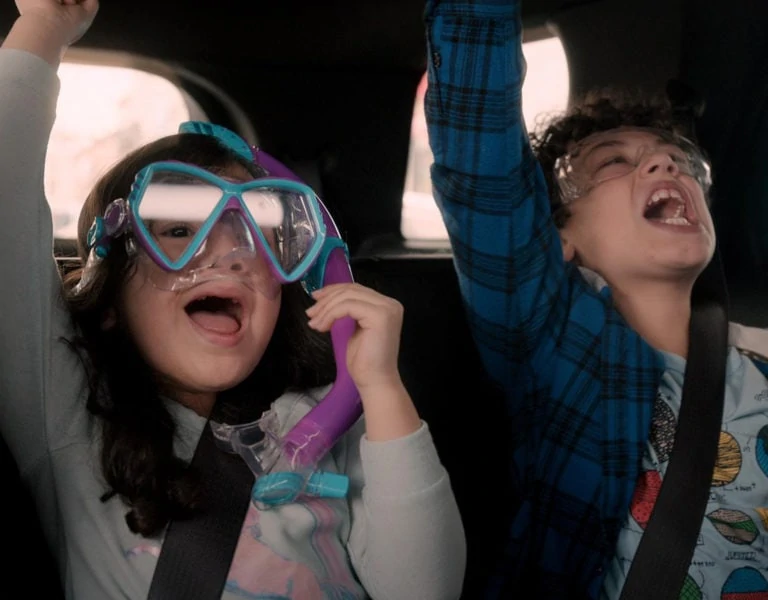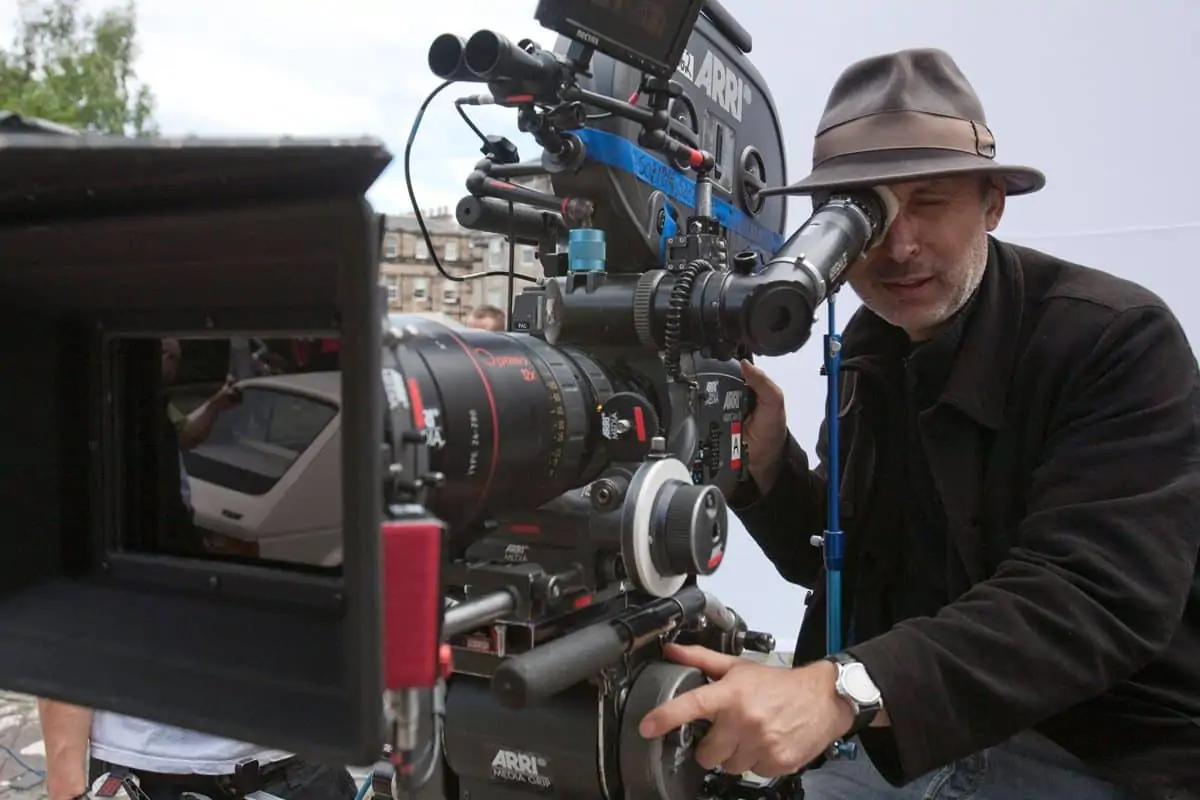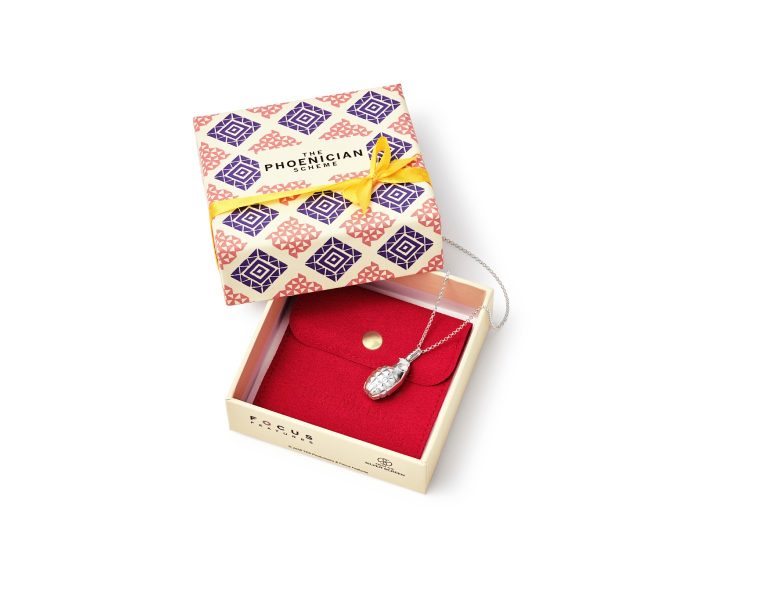Fishy business
A rip-roaring black comedy that puts Grimsby firmly on the filmmaking map, Three Day Millionaire follows a handful of the town’s fishing folk as they attempt the heist of a lifetime. Cinematographer Andrew Rodger shares his technical and creative choices for the film, along with his memories from filming – including the olfactory challenges of shooting in a fish factory!
In “the greatest heist Grimsby has ever seen”, three fishermen whose days making solid money at sea have come to an abrupt end plan an audacious scheme to rake in more cash. Three Day Millionaire’s amusing riff on Grimsby’s rich fishing heritage positions the port town – once host to the world’s largest fishing fleet – as a character as much as a location.
Hollywood’s lens last fell on Grimsby in 2016, when Sacha Baron Cohen’s action comedy The Brothers Grimsby provoked local outrage for its portrayal of the town (ironically, it wasn’t even shot there). Three Day Millionaire gives it a much kinder platform, thanks in part to its director’s love for his adopted hometown. Jack Spring (the UK’s youngest feature director aged 21 with Destination: Dewsbury in 2019) devoted himself to researching Grimsby’s seafaring past in preparation for the film and engaged a cast of local extras to bring the story to the screen.
For cinematographer Andrew Rodger, meanwhile, Three Day Millionaire marked his first visit to the Lincolnshire seaside and a guts-and-all insight into a very different way of life. “My least favourite place to shoot was the fish factory,” he admits. “I’m quite a soft, Southern, artsy guy, and I think you have to be quite tough to work in a fish place. We’d walk away smelling of fish and you couldn’t get it out of your hair or your shoes, so most of the things I wore there I had to throw away.”
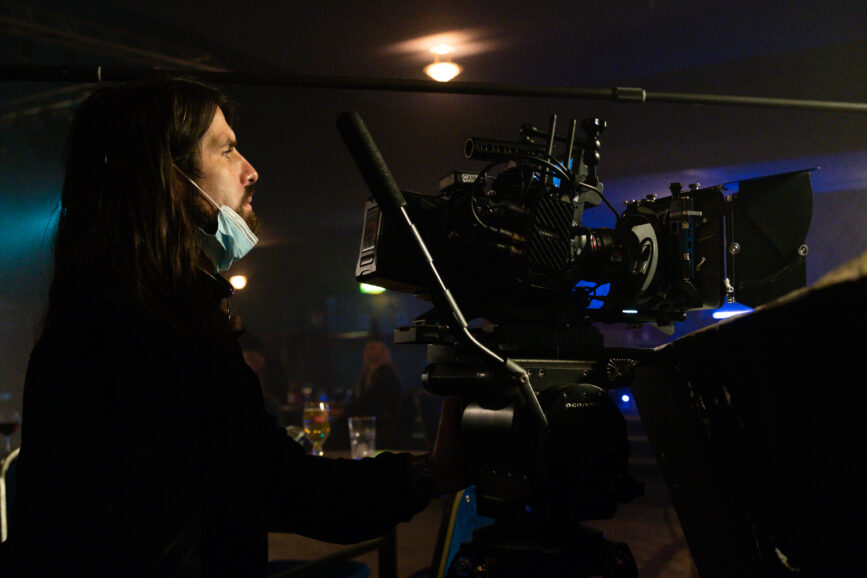
A DP for over 15 years, Rodger’s work has taken him to the likes of Sky Sports and the BFBS along the way to his present role focusing on features and episodic TV. He’s a long-time collaborator of producer Giles Alderson, but Three Day Millionaire marked Rodger’s first project with Spring: “He’s one of those people that will trust or pick people that he trusts in the job and let them do it. He’s there for questions and there for his own ideas, but it’s very much a collaboration.”
Grimsby’s industrial vistas gave him the chance to shoot some “Blade Runner-like” landscapes: “It’s like a backlot… there are these beautiful, empty, industrial breath-taking vistas and the sea is always there. And the houses in Grimsby are these tiny, thin things from the street, then they go on forever with big, high ceilings – really beautiful houses. We walked around with our mouths open and went, yeah, we can shoot here.”
Finding locations in the town that were both able to contain the story and worked with the colour palette was key, but production designer Errol Jarc was always on hand to help. “Whenever these locations fell short, Errol and his team stepped in to add the odd false wall or window to the practical locations. The safe and a good portion of the room that houses it were built on location to a very high standard in next to no time by his team.”

Inspirations and influences
A big fan of Guy Ritchie’s work, director Spring gave Rodger a watch list of classic heist movies to digest. The DP’s own inspirations include Katelin Arizmendi, citing her “beautified heightened reality” as an inspiration. “Although the film is tonally different I was also influenced by Matthew Libatique’s work with Darren Aronofsky, particularly Requiem for a Dream,” he adds.
Principal photography took place in October 2021 and Rodger shot on his own, specially adapted Blackmagic URSA 4.6k, equipped with a Lucadapter Magicbooster which converts the URSA into a functional full-frame camera. “It makes the camera see in the dark – it’s incredible,” he says. “You don’t need a lot of light to shoot with it.” The team also used a Blackmagic Pocket Cinema Camera 4K for car mounts and other shots where the URSA wouldn’t fit, with a Metabones adapter to make it Super 35mm.
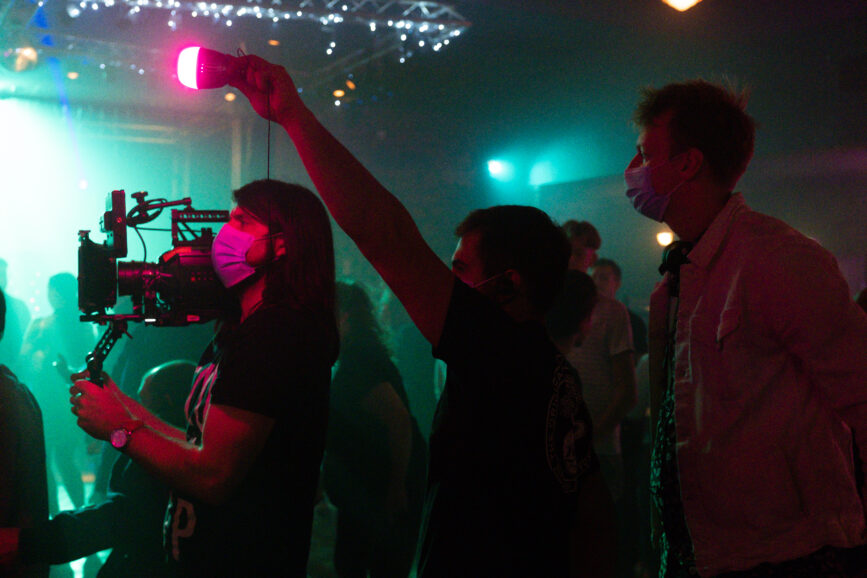
Rodger opted for vintage glass, namely his own Asahi Super Takumar 1960s Japanese stills lenses, which he’d modified to work with the Blackmagic and modern geared focus motors, and paired with his own filters. “I really love Hollywood Black Magic filters. If it’s right for the project, I’ll stick them in – I think they’re the right balance of sharpness and tone, and give everything a really nice quality, but they weren’t working for this. So, I got a UV filter and some black spray paint, and misted the paint in the air and waved the filter through it. I made loads of different intensities.
“The other thing with filters is, you can’t get a 1/16, so I made it myself. It was quite freeing that I could do things like that, which gave tone and uniqueness to the look.”
Adopting a painting/photography style to his lensing, his approach to camera movement was about staying composed and only really moving when necessary. This was contrasted by the speedy movement during the heist sequences. “It was very photographic,” he explains. “So, any flares we’d get in the lens, loads of atmos in the room, anything weird the lenses were doing – we’d embrace it. We’d get maximum texture – that’s from the locations, the set design and costume, but also from the actual photography.”

Team effort
The multitasking Nathan O’Kelly was Steadicam operator, 1st AC and 2nd unit DP, as well as being the drone operator on Three Day Millionaire. It’s his work you see in the attention-grabbing opener, shot on location on the Ross Tiger – a traditional trawler that’s now a floating museum. It was an exciting place for the team to shoot, but given that it was a museum, there was lots of signage to remove before filming could take place!
O’Kelly was able to deftly thread himself through the ship, despite its size constraints. “We did that opening sequence in about 14 takes – with a big Steadicam, going through doorways with half an inch either side, travelling with an actor, and I don’t know how, but these people did it,” adds Rodger.
Rodger worked with gaffer Andy Raine to give the film its distinctive lighting. The pair brought texture and colour to locations with a range of Astera Titan Tubes, plus ARRI S30 and S60 SkyPanels with DoPChoice Snapbags; 4×4 and 3×3 frames with half and full grid cloth; as well as ARRI M18 (usually with Straw) and ARRI 2.5k HMIs, and Source Four Zoom lamps.
The DP describes their approach to lighting as very ‘low level’. “I really like to light that way when I can – when you walk into the sets and they’re dark, just how they would be on the night and you’re not having to imagine it. We tried to keep things believable for the actors.”

Other key crew members included key grip Francis Corr (“The fastest key grip I’ve ever worked with,” says Rodger), best boy grip Harry Chapman, best electric boy Cade Raynor, 2nd AC Matthew Welfare, camera trainee Phoenix Thomason, and 2nd unit DP Matthew Ride-Smith.
Despite the challenges of shooting during Covid and the infamous fish factory, lensing Three Day Millionaire was an enriching experience for Rodger. But what lessons will he take from working on the production? “Something I learn every time is that it’s really important to have a team around you that are like-minded, and to just let them do the thing they’re really good at,” he notes. “Hire the people you know are on-side and want to get it done, and look after them. As long as you can try and look after people, and let them do their job, that’s half of being a DP, I think.
“Oh, and I don’t want to work in a fish factory.”
Fittingly, Three Day Millionaire premiered in Grimsby on 18 November, before general release in UK and Irish cinemas and digital platforms from 25 November. More information here: https://www.threedaymillionaire.com/tour
